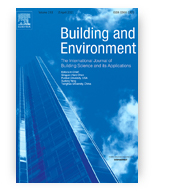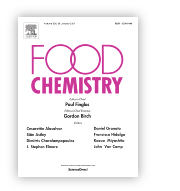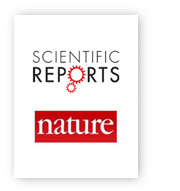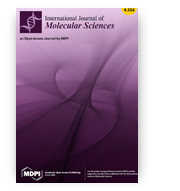Ten questions concerning age-friendly cities and communities and the built environment
Joost Van Hoof, Hannah R. Marston, Jan Kazak, Tine Buffel
Building and Environment
 The development of ‘age-friendly cities’ has become a major area of work in the field of ageing and the built environment. This movement is driven by the observation that cities are home to an ever-increasing ageing population. Over the past decade, a multitude of age-friendly initiatives have been developed with the aim of making physical and social environments more favourable for older people's well-being, health and ability to live in the community. This article explores ten key questions associated with the age-friendly cities and communities' movement, with a particular focus on the built environment. It provides an overview of the history of the age-friendly cities' movement and the underlying models, the aspects of the built environment that are relevant for age-friendly cities, the ways age-friendliness can be evaluated, and the interactions between age-friendly cities initiatives and other strategic agendas such as smart cities. The paper concludes by discussing future perspectives and possible directions for further development of the age-friendly movement.
The development of ‘age-friendly cities’ has become a major area of work in the field of ageing and the built environment. This movement is driven by the observation that cities are home to an ever-increasing ageing population. Over the past decade, a multitude of age-friendly initiatives have been developed with the aim of making physical and social environments more favourable for older people's well-being, health and ability to live in the community. This article explores ten key questions associated with the age-friendly cities and communities' movement, with a particular focus on the built environment. It provides an overview of the history of the age-friendly cities' movement and the underlying models, the aspects of the built environment that are relevant for age-friendly cities, the ways age-friendliness can be evaluated, and the interactions between age-friendly cities initiatives and other strategic agendas such as smart cities. The paper concludes by discussing future perspectives and possible directions for further development of the age-friendly movement.
10.1016/j.buildenv.2021.107922
Potential valorization of Cornelian cherry (Cornus mas L.) stones: roasting and extraction of bioactive and volatile compounds
Radosław Spychaj, Alicja Kucharska, Antoni Szumny, Dominika Przybylska, Ewa Pejcz, Narcyz Piórecki
Food Chemistry
 This study aimed to characterize the antioxidant potential, bioactive and volatile compounds of the stones from fruits of Cornus mas. Both fresh and roasted stones show a high antioxidant potential (166.48 – 509.74 μmol TE/g dw stones), which significantly depends on the cultivars. The roasted stones preserved 43.6% (DPPH; ‘Raciborski’) to 97.2% (FRAP; ‘Alesha’) of the antioxidant activity of the non-roasted stones. In the stones, two iridoids and ellagic acid were determined. During roasting, loganic acid remained stable, whereas cornuside was completely degraded. The analyses showed a 30-fold increase in the concentration of ellagic acid and in the formation of two of its derivatives. The major aroma compound of the roasted stones was furfural, but we also identified 18 pyrazine derivatives. This study is the first attempt to valorize Cornelian cherry stones via roasting. The roasted stones can be a coffee substitute, or aromatic and bioactive additions to cereal coffees.
This study aimed to characterize the antioxidant potential, bioactive and volatile compounds of the stones from fruits of Cornus mas. Both fresh and roasted stones show a high antioxidant potential (166.48 – 509.74 μmol TE/g dw stones), which significantly depends on the cultivars. The roasted stones preserved 43.6% (DPPH; ‘Raciborski’) to 97.2% (FRAP; ‘Alesha’) of the antioxidant activity of the non-roasted stones. In the stones, two iridoids and ellagic acid were determined. During roasting, loganic acid remained stable, whereas cornuside was completely degraded. The analyses showed a 30-fold increase in the concentration of ellagic acid and in the formation of two of its derivatives. The major aroma compound of the roasted stones was furfural, but we also identified 18 pyrazine derivatives. This study is the first attempt to valorize Cornelian cherry stones via roasting. The roasted stones can be a coffee substitute, or aromatic and bioactive additions to cereal coffees.
10.1016/j.foodchem.2021.129802
A multi-factorial mathematical model for the selection of electropolishing parameters with a view to reducing the environmental impact
Paweł Lochyński, Sylwia Charazińska, Maciej Karczewski, Edyta Łyczkowska-Widłak
Scientific Reports
 Electrochemical metal processing is a process that generates harmful pollution. An important goal often disregarded by researchers is not only the achievement of the best possible quality of electropolished surface, but also minimising the load of metal ions in the wastewater generated in the process. The conducted experiments on the electropolishing of stainless steel in laboratory conditions, varied time, temperature and current density conditions, as well as process bath contamination (ranging from 0 to 6% Fe mass) allowed us to develop a multi-factorial mathematical model. This model offers the possibility of being able to select the process parameters recommended for achieving the desired effects. It takes into account such surface quality parameters as roughness and gloss, process duration and current density that determine power consumption, as well as the weight loss of the electropolished element that influence the rate of contamination in processing baths and wastewater. The study presents the composition of a passive film of stainless steel after the electropolishing process at the initial and final stages of the process bath’s exploitation. The results obtained from XPS tests were then correlated with the results of corrosion tests and resistance to pitting corrosion in the environment of 0.1 M NaCl.
Electrochemical metal processing is a process that generates harmful pollution. An important goal often disregarded by researchers is not only the achievement of the best possible quality of electropolished surface, but also minimising the load of metal ions in the wastewater generated in the process. The conducted experiments on the electropolishing of stainless steel in laboratory conditions, varied time, temperature and current density conditions, as well as process bath contamination (ranging from 0 to 6% Fe mass) allowed us to develop a multi-factorial mathematical model. This model offers the possibility of being able to select the process parameters recommended for achieving the desired effects. It takes into account such surface quality parameters as roughness and gloss, process duration and current density that determine power consumption, as well as the weight loss of the electropolished element that influence the rate of contamination in processing baths and wastewater. The study presents the composition of a passive film of stainless steel after the electropolishing process at the initial and final stages of the process bath’s exploitation. The results obtained from XPS tests were then correlated with the results of corrosion tests and resistance to pitting corrosion in the environment of 0.1 M NaCl.
10.1038/s41598-021-88731-5
The Effect of Using Micro-Clustered Water as a Polymer Medium
Żaneta Król-Kilińska, Dominika Kulig, Ihar Yelkin, Anna Zimoch-Korzycka, Łukasz Bobak, Andrzej Jarmoluk
International Journal of Molecular Sciences
 The aim of the study was to investigate the changes within the physicochemical properties of gelatin, carrageenan, and sodium alginate hydrosols prepared on the basis of micro-clustered (MC) water. The rheological parameters, contact angle and antioxidant activity of hydrosols were investigated. Moreover, the pH, oxidation–reduction potential (ORP) and electrical conductivity (EC) were measured. The hydrosols with MC water were characterized by a lower pH, decreased viscosity, a lower contact angle, and only slightly lower antioxidant activity than control samples. The results showed that hydrosol’s properties are significantly changed by MC water, which can lead to enhancement of its applicability but requires further investigation.
The aim of the study was to investigate the changes within the physicochemical properties of gelatin, carrageenan, and sodium alginate hydrosols prepared on the basis of micro-clustered (MC) water. The rheological parameters, contact angle and antioxidant activity of hydrosols were investigated. Moreover, the pH, oxidation–reduction potential (ORP) and electrical conductivity (EC) were measured. The hydrosols with MC water were characterized by a lower pH, decreased viscosity, a lower contact angle, and only slightly lower antioxidant activity than control samples. The results showed that hydrosol’s properties are significantly changed by MC water, which can lead to enhancement of its applicability but requires further investigation.
10.3390/ijms22094730









